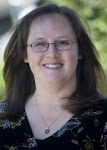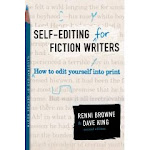What publisher are you targeting?
The first time I heard that question, my reaction was “Anyone who wants my book!” I suspect several of you feel the same way. We’ve all heard the stories of authors like Frank Baum and Madeleine L’Engle who received dozens of rejections before finding a publisher. They obviously didn’t write for a specific publisher.
Two thoughts: As a writer, I’m not in the same class as Baum and L’Engle.
Second thought: To quote an old adage, if you aim at nothing, you’re sure to hit it.
As authors, we’re supposed to know our audience. We also should know our publisher. But how?
Ideally, we have a publisher (or a “short list” of potential publishers) in mind before we begin writing. Let’s start with some easy differences between publishers: Length? 1st or 3rd person? Number of POV characters? Genre? Flipping through a few books from that publisher and studying the market guide will answer most of those questions.
Once you’ve identified a publisher that you believe might work, the hardest work lies ahead of you: read their books. If the publisher has a book club, subscribe for several months up to a year. . .and read all the books. If they don’t, obtain several books by different authors in your genre. What feeling do you get for style, conflicts, characters? If you write angst-ridden fiction and the publisher focuses on light-hearted romance, your story probably won’t fit. When reading, pay as much attention to the publisher as you do to the author.
Once you’ve read enough from a particular publisher, you get a sense of what they are looking for in a manuscript. For instance, what sets apart Barbour’s Heartsong Presents, Harlequin’s Love Inspired/Historical/Suspense, and Summerside’s Love Finds You from each other? How has each publisher distinguished itself from the other and found a thriving market in their overlapping genres? The answers may surprise you.
The same basic story might fit any of those publishers, but you will have a better chance of selling it if you tweak your story for their specific audience.
I read Heartsong books for years before I made my first sale. I have yet to sign on the dotted line with any publisher other than Barbour, but I am getting close. Within the past year, several publishers I have studied extensively have asked for manuscripts. One has even penciled me in for 2012. So I’m a living testimony to the fact it works.
Have you ever experienced this yourself? Let us learn from each other.
Subscribe to:
Post Comments (Atom)












So true, Darlene! Differences between publishers' lines can be subtle or blatant. Networking with other writers is also a big help in this department.
ReplyDeleteGood point, Susan!
ReplyDeleteI agree. Knowing where your book will fit before you write it, makes it so much easier.
ReplyDeleteJulie, I thought I had replied last night. Thanks for stopping by!
ReplyDeleteOh, I'm working on it!
ReplyDeleteI have been researching all this info for years to try to become familiar with publishers and what they are looking for. It helps to keep in mind while working on a project.
Great advice, Darlene. I've been doing that and I have found a publisher that fits my style. Now to finish and get it to them.
ReplyDeleteCarla, Kathy: Wishing you the best of luck! (Well, you know what I mean!) as you craft your story for your preferred publishers.
ReplyDeleteGreat advice across the board. From researching the right kind of representation, to the publisher you want to sell to...targeting saves a lot of heartache.
ReplyDeleteIt sounds like you folks have a lot more marketing savy than I did when I started. Well done!
ReplyDelete